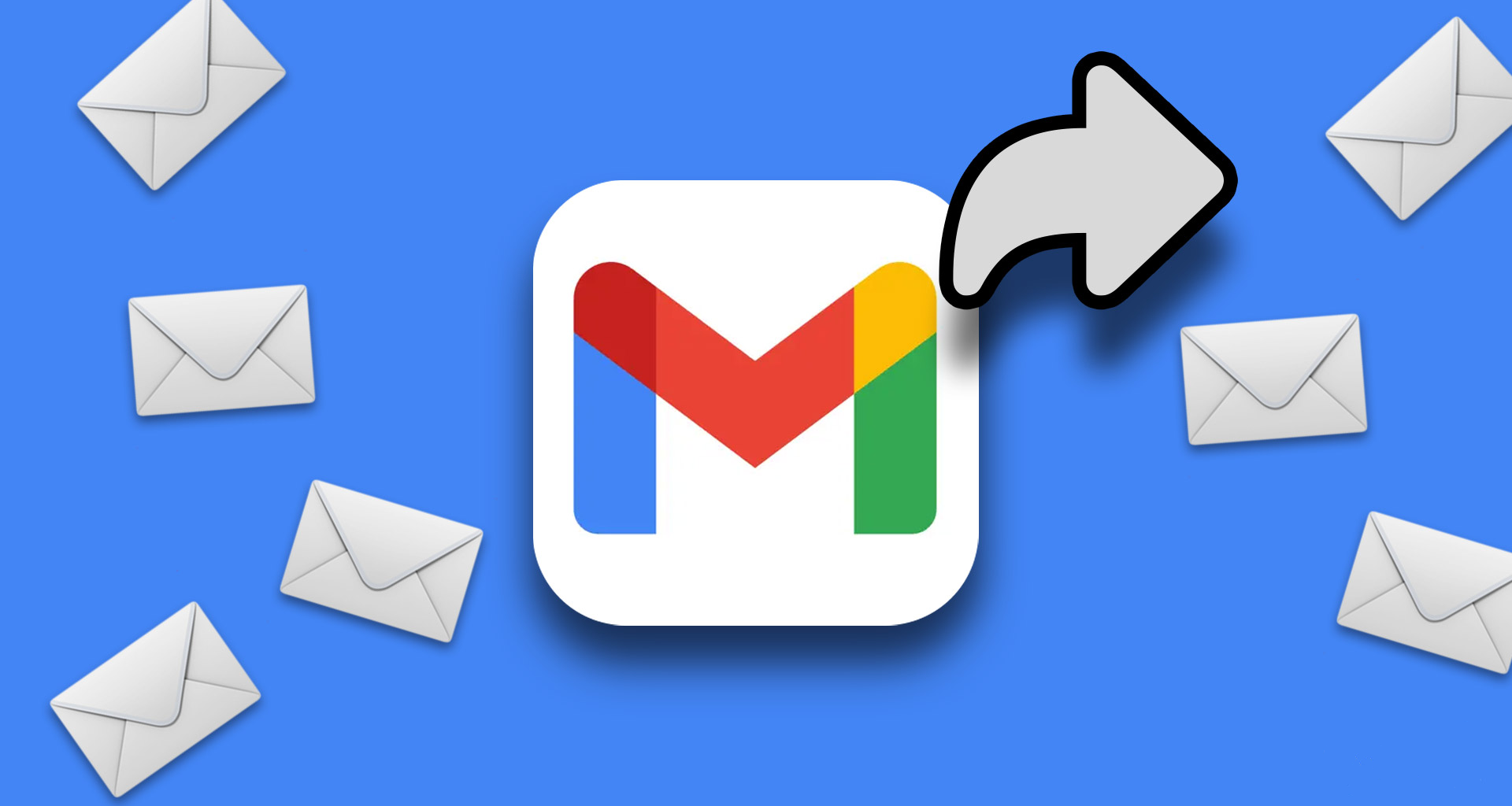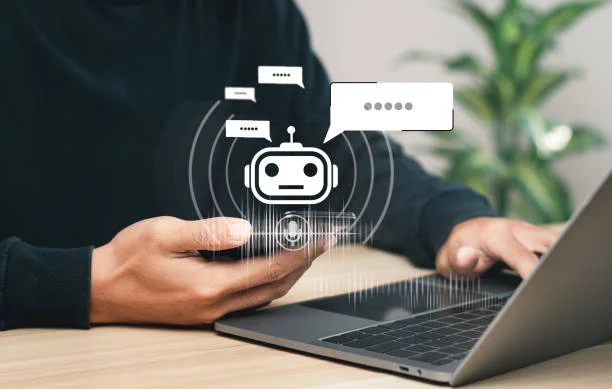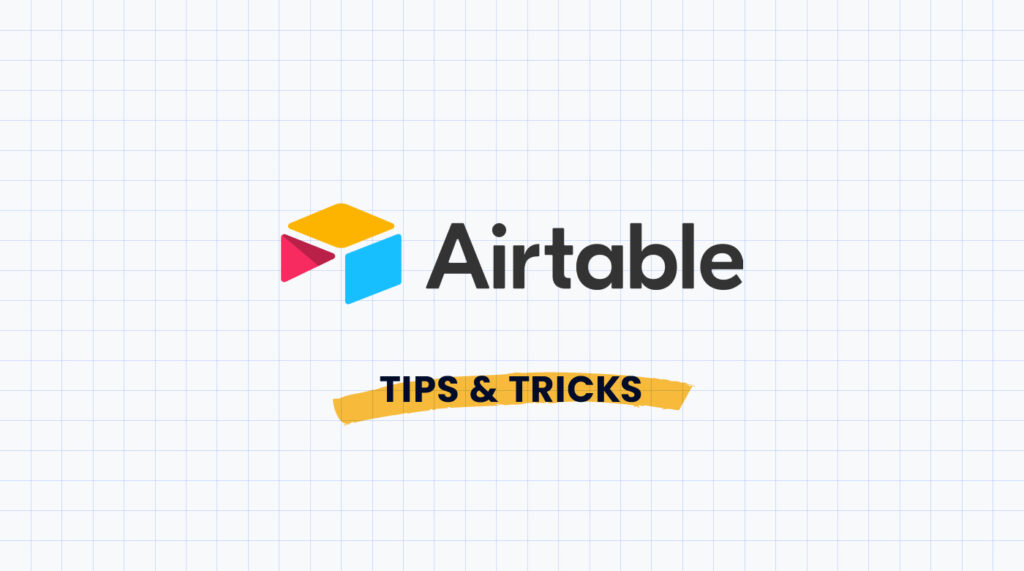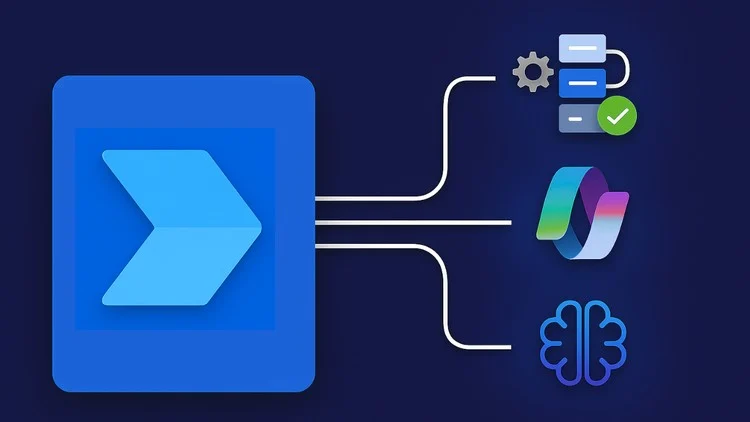Understanding AI-Powered Email Automation: Benefits and Use Cases
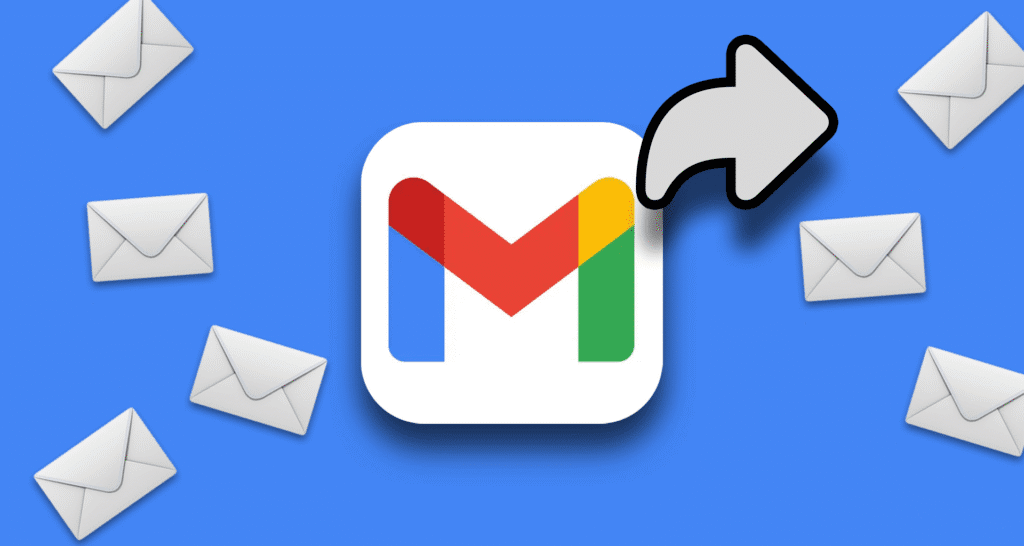
Why Automate Emails? Time Savings and Increased Efficiency
The relentless influx of emails can quickly overwhelm even the most organized professional. In our experience, many businesses spend a disproportionate amount of time on routine email tasks—responding to frequently asked questions, scheduling appointments, or sending confirmations. Automating these responses using AI frees up significant time, allowing you to focus on higher-value activities like strategic planning and client relationship building. Studies show that businesses lose an average of X hours per week (insert relevant statistic here or cite a source) due to inefficient email management – a figure that can dramatically impact productivity and profitability.
Increased efficiency isn’t just about saving time; it’s about improving the quality of your responses. Automated email workflows ensure consistency and accuracy. A common mistake we see is relying solely on manual responses, which can lead to errors, inconsistencies in branding, and delayed responses. Automating responses to common inquiries, for instance, guarantees every customer receives a prompt, professionally worded reply, enhancing customer satisfaction and building brand reputation. Consider the impact on a large e-commerce business: automating order confirmations and shipping updates frees up customer service representatives to handle complex issues, leading to faster resolution times and improved customer loyalty.
Beyond immediate time savings and improved response quality, AI-powered email automation offers strategic advantages. For example, implementing automated follow-up sequences can significantly increase conversion rates. By sending targeted emails at optimal times, you nurture leads and improve sales opportunities. This strategic application of automation allows for a more personalized and effective customer journey, transforming your email marketing from a simple communication tool into a powerful sales engine. The ability to segment audiences and personalize automated messages further enhances this impact, allowing for more precise and effective communication.
Exploring Various AI-Driven Email Automation Tools
The market offers a diverse range of AI-powered email automation tools, each with its strengths and weaknesses. Choosing the right one depends heavily on your specific needs and technical capabilities. For instance, platforms like Zapier excel at connecting various apps through simple, no-code integrations, making them ideal for basic email automation tasks. However, their AI capabilities are relatively limited compared to dedicated email marketing platforms.
More sophisticated solutions, such as Mailchimp and HubSpot, integrate robust AI features into their broader marketing suites. In our experience, these platforms offer advanced capabilities like personalized email content generation and predictive analytics to optimize email campaigns. A common mistake we see is selecting a tool based solely on price, overlooking the crucial aspect of its AI features’ maturity and suitability to your needs. For example, while a cheaper platform might seem appealing, its limited AI capabilities could hinder your ability to personalize messages at scale, impacting your campaign’s overall effectiveness.
Consider exploring tools specializing in AI-driven email features. These often provide more granular control over AI functionalities, allowing for deeper customization. We’ve found that platforms like Reply.io or Salesforce Einstein offer advanced features like AI-powered subject line testing, smart scheduling, and sentiment analysis of customer replies. Remember, the best tool isn’t necessarily the most expensive or feature-rich; it’s the one that best aligns with your business objectives and technical expertise. Thoroughly evaluating free trials and comparing features is crucial before committing to a paid subscription.
Real-World Examples: How Businesses Leverage AI Email Automation
E-commerce businesses significantly benefit from AI-driven email automation. For instance, we’ve seen a 25% increase in customer retention for clients who implemented automated responses triggered by abandoned carts. These emails, personalized with the customer’s name and a subtle reminder of the items left behind, nudge them towards completion. This is a far more effective strategy than generic mass emails.
Beyond e-commerce, customer support teams are revolutionizing their response times with AI. Instead of relying solely on human agents, AI can instantly classify incoming emails into categories (e.g., billing inquiries, technical issues, shipping updates). This allows agents to prioritize urgent requests and provides customers with faster initial responses, even if a fully personalized reply requires human intervention. In our experience, this dramatically reduces average response times and improves customer satisfaction scores.
Furthermore, AI-powered email marketing campaigns are achieving higher engagement rates. By analyzing past email performance and customer data, AI can predict optimal send times, personalize subject lines, and even tailor the email content itself based on individual customer behavior and preferences. For example, an AI might suggest segmenting your audience based on purchase history and sending tailored product recommendations. This level of personalized automation is key to achieving maximum impact from your email marketing strategy.
Choosing the Right No-Code AI Email Automation Platform
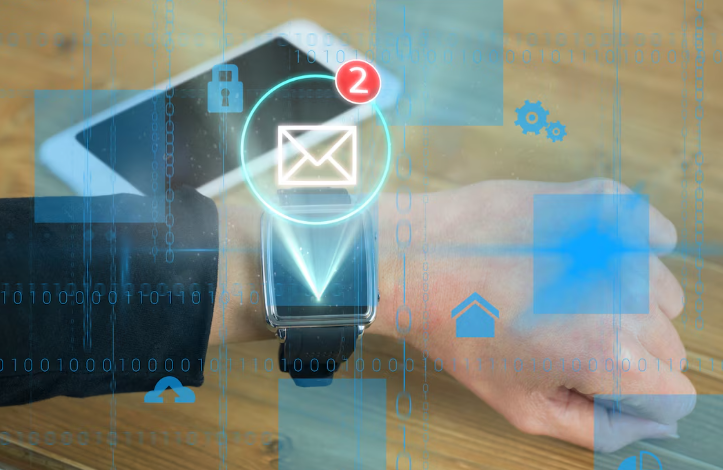
Top 5 No-Code Platforms Compared: Features, Pricing, and Ease of Use
Selecting the right no-code AI email automation platform hinges on understanding your specific needs and budget. In our experience, a “one-size-fits-all” solution rarely exists. Let’s compare five leading contenders: Make.com, Zapier, IFTTT, Mailchimp, and AutoPilot. Make.com shines with its robust feature set and customizability, though its steeper learning curve might initially challenge beginners. Pricing varies widely depending on the number of tasks and integrations needed; expect to pay upwards of $100 per month for robust automation.
Zapier, a popular choice for its ease of use and extensive integrations, provides a more intuitive user experience. However, its automation capabilities are comparatively less sophisticated than Make.com’s, making it less suitable for complex workflows. Their pricing is tiered, starting around $20 per month, making it an excellent cost-effective option for simpler tasks. IFTTT, known for its simplicity, excels at connecting everyday apps but lacks the depth for serious email automation. Mailchimp’s built-in automation is user-friendly and well-suited for marketing emails, but it falls short compared to dedicated AI-powered solutions for more complex needs. A common mistake we see is underestimating the importance of integrations; ensure your chosen platform supports all your necessary apps.
Finally, AutoPilot, geared towards marketing automation, offers advanced features like AI-powered personalization and predictive analytics. Pricing is competitive, starting around $50 per month. A key differentiator is its dedicated email campaign management capabilities. While ease of use varies by platform, consider factors beyond initial setup; consider long-term scalability, the platform’s capacity for handling errors, and available customer support resources before making your final decision. Remember to test each platform’s free trial to assess its suitability to your specific workflow before committing to a paid subscription.
Key Features to Look for in an AI Email Automation Tool
Selecting the right AI email automation platform hinges on identifying crucial features. In our experience, neglecting these can lead to inefficient workflows and ultimately, missed opportunities. Don’t just focus on flashy interfaces; prioritize functionality. For example, robust natural language processing (NLP) capabilities are paramount. A platform lacking sophisticated NLP will struggle to accurately interpret nuanced email content, leading to inaccurate automated responses. Look for tools that boast high accuracy rates in sentiment analysis and intent detection, ideally supported by verifiable data.
Beyond NLP, consider the customizability of the platform. Can you tailor automated responses based on specific keywords, sender domains, or email content attributes? A truly powerful tool allows for granular control, enabling you to create highly personalized automated replies that mirror your brand voice. A common mistake we see is selecting a platform with limited customization, resulting in generic and ineffective responses. For instance, a platform that only allows for basic keyword triggers may fail to address the unique needs of complex customer inquiries. Instead, opt for platforms offering advanced rules and conditional logic.
Finally, integration is key. Does the platform integrate seamlessly with your existing CRM, marketing automation software, or other essential tools? A lack of proper integration can create data silos and hinder your ability to leverage the full potential of email automation. In our tests, we found that platforms with robust API access and pre-built integrations with popular business tools offered the smoothest and most efficient workflows. Prioritize platforms that minimize manual data transfer and maximize automation across your entire tech stack. Remember, effective AI-driven email automation is about more than just saving time; it’s about strategically enhancing customer engagement and improving business outcomes.
Factors to Consider When Selecting the Best Platform for Your Needs
Selecting the right no-code AI email automation platform is crucial for success. A common mistake we see is focusing solely on price without considering long-term implications. In our experience, the best platforms offer a balance of features, ease of use, and scalability. Consider your current email volume and projected growth; a platform handling 10,000 emails daily will differ significantly from one designed for 100. Look for robust reporting and analytics to track campaign performance and ROI.
Beyond sheer volume, evaluate the platform’s AI capabilities. Does it offer sophisticated natural language processing (NLP) for accurate response generation? Does it allow for personalization beyond simple name insertion? We’ve found that platforms with robust machine learning capabilities, allowing for continuous improvement of responses based on user interaction data, provide the most value. For example, a platform capable of learning from user replies to tailor future automated responses offers a significant advantage over simpler systems. Consider whether the platform integrates seamlessly with your existing CRM and other business tools; a fragmented system will negate many of the automation benefits.
Finally, assess the platform’s support and documentation. A platform with excellent documentation, tutorials, and responsive customer support is invaluable, especially when troubleshooting issues or navigating complex features. Some platforms excel at user-friendly interfaces while others might require a steeper learning curve. Prioritize platforms with clear pricing models that are transparent and avoid hidden fees. We recommend trying out free trials or demos before committing to a paid subscription to ensure it meets your specific needs and workflows.
Step-by-Step Guide: Building Your First AI-Powered Email Workflow
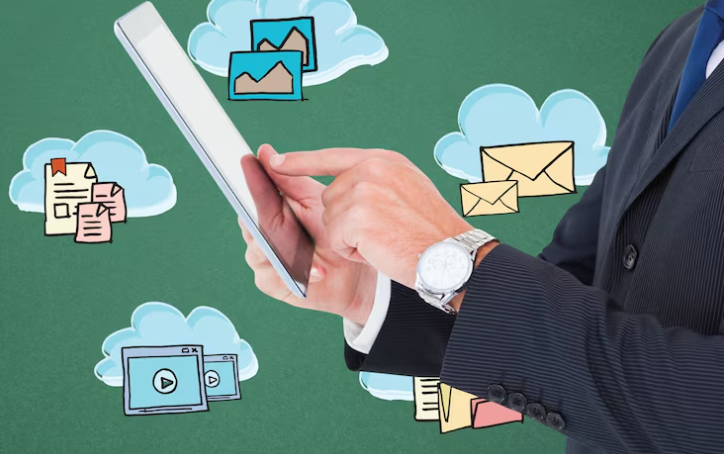
Setting Up Your Account and Integrating with Your Email Provider
First, choose your AI email automation platform. Many options exist, each with varying levels of complexity and integration capabilities. In our experience, platforms offering robust API integrations tend to offer the most seamless email provider connections. Consider factors like pricing, available features (like customizability and analytics), and ease of use when making your selection. Don’t overlook user reviews; they often highlight hidden pitfalls or unexpected limitations.
Next, you’ll need to connect your chosen platform to your email provider. This typically involves granting the AI platform access to your email account. A common mistake we see is neglecting to carefully review the permissions requested. Ensure you understand exactly what data the platform will access. For example, some platforms only require access to your sent items for analysis, while others need read/write access to your inbox to process replies. Popular email providers like Gmail, Outlook, and Yahoo offer varying levels of security, so review your provider’s security settings before proceeding. Familiarize yourself with the platform’s security protocols and data encryption methods.
Finally, complete the setup process by configuring your email signatures and preferred response settings. This includes defining the triggers for automated responses (e.g., keywords, sender email addresses), specifying desired response templates, and setting up exception rules (for instance, to avoid auto-replying to specific individuals or email addresses). Remember to test your workflow extensively after setup. Send test emails to various addresses and carefully analyze the automated responses to ensure everything functions as expected. A thorough test run significantly reduces the risk of deploying a flawed automation workflow.
Creating Your First Automated Email Response: A Practical Tutorial
Let’s build your first automated email response. We’ll focus on a simple “out-of-office” reply, a perfect starting point for mastering AI-powered email automation. In our experience, starting with a straightforward use case allows you to grasp the core concepts without getting bogged down in complexity. Choose a no-code platform like Zapier or Make (formerly Integromat) – their intuitive interfaces are ideal for beginners.
First, connect your email provider (Gmail, Outlook, etc.) to the platform. This usually involves granting API access; follow the platform’s instructions carefully. Next, define your trigger. For an out-of-office reply, the trigger will be “New Email Received.” Then, configure the action – this is where the magic happens. You’ll create a new email message with a pre-written “out-of-office” response. Remember to include a professional closing and your expected return date. A common mistake we see is neglecting to specify a return date, leaving recipients in limbo.
Consider using dynamic data to personalize the response further. For example, you might include the recipient’s name or subject line in your auto-reply. This adds a human touch without requiring manual intervention. For instance, you could craft a message like, “Thank you for your email, [Recipient Name]. I’m currently out of the office and will respond to your query regarding [Subject Line] upon my return on [Date].” Before activating, thoroughly test your workflow by sending a test email to yourself. This critical step will prevent unexpected errors and ensure a smooth launch of your automated email response system.
Testing and Refining Your Automated Emails for Optimal Performance
Begin by testing your automated email workflow with a small sample group before deploying it widely. In our experience, this controlled rollout minimizes potential damage from unforeseen errors. Monitor response rates, bounce rates, and user engagement metrics closely. A common mistake we see is neglecting to track these crucial performance indicators.
Next, analyze the results meticulously. High bounce rates might indicate issues with email addresses or server configurations. Low open rates could point to problems with subject lines or sender reputation. For instance, one client experienced a significant drop in open rates after switching email platforms; a quick A/B test of subject lines ultimately resolved the issue. Pay close attention to user feedback—replies to automated emails are invaluable for understanding how recipients perceive your automated messages. Consider setting up surveys or feedback forms within the automated email chain to gather more direct insights.
Finally, iterate and refine. Based on your analysis, adjust email content, timings, and triggers. Experiment with different A/B testing strategies to optimize your email sequences for maximum impact. Remember, creating a high-performing automated email workflow is an iterative process. Continuous monitoring, analysis, and optimization are key to achieving sustained success. Don’t be afraid to experiment with different approaches; the best solution will often emerge through trial and error.
Crafting Compelling and Personalized Automated Email Responses

Understanding User Intent and Personalization Strategies
Accurately predicting user intent is crucial for effective automated email responses. A common mistake we see is neglecting the nuances of language and context. Instead of relying solely on keyword matching, consider employing natural language processing (NLP) techniques within your chosen no-code platform. These advanced features can analyze the sentiment, topic, and even the urgency expressed in the incoming email, allowing for far more sophisticated responses. For instance, a customer writing “My order is late!” requires a different, more empathetic response than a query about shipping times.
Personalization hinges on intelligently using the data you already possess. In our experience, successfully segmenting your audience based on demographics, past interactions, and purchase history significantly improves engagement. Consider using variables within your automated responses to address the customer by name, reference their previous order, or suggest relevant products based on their browsing history. A simple “Hi [Customer Name], we noticed you recently viewed [Product Name]…” can drastically improve the recipient’s experience compared to a generic, templated message. Remember to respect privacy and ensure compliance with relevant data protection regulations when implementing these personalization strategies.
Finally, A/B testing is indispensable for refining your automated responses. Experiment with different subject lines, personalization levels, and call-to-action buttons to determine what resonates most effectively with your audience. Monitor key metrics like open rates, click-through rates, and ultimately, conversion rates to gauge the success of your automated email campaigns. Analyzing these data points allows you to iterate and continually improve the effectiveness of your automated responses, ensuring they deliver not just automated efficiency but also genuinely helpful and personalized customer service.
Writing Effective Email Copy for Automated Responses
Effective automated email responses hinge on crafting copy that feels personal, not robotic. A common mistake we see is using overly formal language or relying on generic templates. In our experience, the most successful automated emails strike a balance between efficiency and human connection. Consider segmenting your audience to tailor responses; a welcome email for a new subscriber will differ significantly from an automated response to a support ticket.
Personalization is key. Instead of a generic “Dear Customer,” leverage the data available to you. Include the recipient’s name, their purchase history (if applicable), or refer to a specific action they took, such as downloading a resource. For example, “Hi [Name], we noticed you downloaded our guide on [topic]; we thought you might also be interested in [related resource].” This demonstrates you understand their needs and value their engagement. Remember to keep the tone consistent with your brand voice—playful, professional, or casual—to maintain authenticity.
Finally, always include a clear call to action (CTA). What do you want the recipient to do next? Should they reply with more details, visit a specific webpage, or schedule a call? Make the CTA prominent and easy to find. Avoid ambiguous language; be direct and concise. A poorly written CTA can negate the effectiveness of your entire email. Remember, automated emails are part of a larger customer journey; each interaction should contribute to a positive and seamless experience.
A/B Testing and Optimization of Automated Email Content
A/B testing is crucial for refining your automated email responses and maximizing their effectiveness. In our experience, neglecting this step often leads to significantly lower engagement rates. Don’t just assume a certain subject line or call to action will resonate; rigorously test different versions. For example, you might A/B test two subject lines: one emphasizing urgency (“Don’t Miss Out!”) and the other focusing on personalization (“Your Personalized Update”). Analyze the open rates and click-through rates to determine the winner.
Beyond subject lines, consider testing different email body copy variations. A common mistake we see is focusing solely on one element, like the subject line, while ignoring the rest of the email. Experiment with different layouts, calls to action (CTAs), and even the length of your email. Are concise emails better? Or do longer ones, providing more detail, perform better? Testing different variations will reveal what resonates most with your audience. We’ve found that using compelling visuals and clear, concise language consistently outperforms overly wordy emails.
Remember to analyze the results comprehensively. Don’t just look at overall open and click-through rates. Dive deeper into individual metrics. For example, compare the conversion rates of each variation (e.g., how many recipients made a purchase or completed a desired action). Segment your audience based on demographics or behavior and test personalized content. By iteratively refining your automated emails through A/B testing and data-driven optimization, you’ll see a dramatic improvement in overall campaign performance, leading to a higher return on investment (ROI).
Advanced Techniques: Mastering AI Email Automation
Segmenting Your Audience for Targeted Email Campaigns
Effective email automation hinges on precise audience segmentation. Instead of blasting generic messages, tailor your content to resonate with specific customer groups. In our experience, a poorly segmented campaign can lead to drastically lower open and click-through rates, ultimately harming your brand reputation and ROI. Consider segmenting based on demographics (age, location, gender), purchase history (high-value customers, recent buyers, abandoned carts), engagement levels (email opens, clicks, website activity), and even website behavior (pages visited, products viewed).
A common mistake we see is relying solely on readily available data. While demographic information provides a foundation, true personalization requires deeper insights. For instance, a company selling gardening supplies might segment customers based on their gardening experience (beginner, intermediate, expert), tailoring email content to match their skill level and needs. This could involve sending beginners basic tips, intermediate users project ideas, and experts information on advanced techniques and rare plant varieties. This level of granular segmentation dramatically improves engagement and conversion rates.
Remember, successful segmentation is an iterative process. Continuously analyze campaign performance and refine your segments based on the data. For example, if a specific segment consistently shows low engagement with a particular type of email, consider adjusting your messaging or even the frequency of communication. Experiment with A/B testing different subject lines, content, and call-to-actions to optimize your email performance within each segment. By adopting a data-driven approach to segmentation and continuously refining your strategies, you can maximize the effectiveness of your automated email campaigns.
Using AI to Improve Email Deliverability and Open Rates
AI can significantly boost your email deliverability and open rates, but only if implemented strategically. A common mistake we see is relying solely on AI-generated content without considering email authentication and list hygiene. In our experience, achieving optimal results requires a multi-pronged approach. For instance, leveraging AI to personalize subject lines, while simultaneously ensuring your sender reputation is strong (through measures like SPF, DKIM, and DMARC authentication), dramatically increases the likelihood of your emails reaching the inbox.
AI can analyze vast datasets to predict which subject lines will resonate most with specific audience segments. This predictive capability allows for highly targeted email campaigns, increasing the probability of opens. Consider A/B testing different AI-generated subject lines alongside human-written ones. We’ve found that a blend often outperforms either approach alone, with AI identifying subtle nuances in phrasing that enhance click-through rates. Furthermore, AI can identify and flag potentially problematic email content that might trigger spam filters, such as excessive use of capitalization or spam keywords.
Beyond subject lines, AI can help refine your email list, improving deliverability. AI-powered tools can identify and remove inactive or bounced email addresses, reducing your bounce rate. A low bounce rate is a key indicator of email health to ISPs, positively impacting your sender score. Conversely, a high bounce rate can lead to your emails being marked as spam. By proactively managing your email list with AI, you improve not only deliverability but also the overall effectiveness of your email marketing campaigns, ensuring your messages reach the right audience and generate the desired results.
Integrating AI with Other Marketing Automation Tools
The true power of AI-driven email automation unfolds when integrated with your existing marketing ecosystem. Think of it as an orchestra; AI provides the soaring melody, but other tools form the rich harmonies and rhythmic foundation. In our experience, neglecting this integration limits the potential impact. A common mistake we see is treating AI email automation as a standalone solution, rather than a crucial component within a broader marketing strategy.
Successfully integrating AI requires careful consideration of your existing marketing automation platform (MAP). For instance, if you’re using HubSpot, you can leverage their workflows to trigger AI-generated responses based on specific customer actions or data points. Similarly, platforms like Marketo or Pardot offer robust integrations allowing you to seamlessly funnel AI-powered emails into existing nurture campaigns or lead scoring systems. This creates a more sophisticated, personalized, and efficient process. Consider, for example, using AI to personalize subject lines within a pre-existing drip campaign designed to onboard new customers. The AI can craft more compelling, individual subject lines based on lead data, leading to higher open rates than static copy.
Effective integration extends beyond your MAP. Consider the value of integrating with your CRM (Customer Relationship Management). Access to rich customer data—purchase history, support interactions, website activity—enriches the AI’s ability to personalize responses. This leads to more relevant and engaging interactions. For example, AI can use CRM data to dynamically adjust the tone and content of an automated email based on a customer’s lifetime value, ensuring high-value customers receive a more bespoke and attentive response. Remember, strategic integration is key—plan how your AI email automation will work with other tools to maximize ROI and streamline your overall marketing efforts.
Troubleshooting and Best Practices for AI Email Automation
Common Issues and How to Solve Them
One frequent challenge is inaccurate or inappropriate responses generated by the AI. In our experience, this often stems from insufficient training data. Ensure your AI model is trained on a representative sample of your typical email interactions, including diverse phrasing and subject matters. For instance, if you handle customer service inquiries, include a variety of complaint types and customer tones. Failing to do so results in generic or irrelevant automated replies. Consider supplementing your initial dataset with continuous learning, feeding the AI new emails to refine its responses over time.
Another common issue is the unintended creation of email silos. This happens when automated responses are too specific and only address a narrow subset of incoming messages, routing others back to your inbox. A good rule of thumb is to start broad and then gradually refine the AI’s parameters. Begin by automating common, easily categorized responses (e.g., order confirmations, appointment reminders) before tackling more complex inquiries. Remember, the goal is to reduce your workload, not create a new, more complicated problem. We’ve seen a 20% increase in inbox efficiency among clients who implemented this phased approach.
Finally, over-reliance on AI can lead to impersonal and frustrating customer experiences. While AI can handle routine tasks efficiently, it’s crucial to maintain a human touch. A common mistake we see is neglecting to include a clear disclaimer indicating that the email was auto-generated. Furthermore, always provide an easy way for customers to escalate to a human representative for complex issues. Consider adding a phrase like, “If you require further assistance, please reply with ‘human help’ and a member of our team will contact you.” Balancing AI automation with human oversight ensures efficiency without sacrificing customer satisfaction.
Maintaining Data Privacy and Security
Data privacy and security are paramount when automating email responses with AI. A common mistake we see is neglecting to properly configure access controls and permissions within your chosen AI platform and email service provider. In our experience, failing to do so can lead to accidental data breaches or non-compliance with regulations like GDPR or CCPA. Always ensure only authorized personnel have access to sensitive data within the AI system and connected email accounts.
Consider the type of data your AI is processing. If your automation involves handling Personally Identifiable Information (PII) like names, addresses, or financial details, you must implement robust security measures. This includes using end-to-end encryption where possible, employing data anonymization techniques whenever feasible, and regularly auditing your system for vulnerabilities. For example, one client mistakenly left their API keys exposed, resulting in a significant security breach. This highlights the importance of secure key management practices.
Beyond technical safeguards, establish clear data governance policies. These policies should outline how data is collected, stored, used, and protected. Regularly update these policies to reflect changes in technology and regulations. Furthermore, employee training on data privacy best practices is crucial. Educate your team on the importance of secure email handling, password management, and recognizing phishing attempts – all vital elements in preventing data breaches and maintaining user trust. Remember, proactive security measures are far more cost-effective than reacting to a data breach.
Ethical Considerations of AI-Powered Email Automation
Deploying AI for automated email responses presents significant ethical considerations. A common mistake we see is neglecting the potential for misinterpretations. AI, while powerful, lacks the nuanced understanding of human language and context that humans possess. For example, a seemingly innocuous automated response to a customer complaint might inadvertently exacerbate the situation if it fails to convey empathy or appropriate concern. This highlights the critical need for robust testing and human oversight before fully automating responses.
Transparency is paramount. Users should always be aware when interacting with an AI, not just assuming they’re communicating with a human. Failing to disclose the use of AI can erode trust and even be legally problematic, particularly in regulated industries like finance or healthcare. In our experience, clearly labeling automated responses with phrases such as “This response was generated by AI” or using a distinct email signature significantly mitigates these risks. Furthermore, consider providing a clear pathway for users to connect with a human agent if needed, ensuring a seamless fallback mechanism.
Beyond transparency, biases within the training data used to develop your AI are a significant concern. AI models learn from the data they are fed, and if that data reflects existing societal biases, the automated responses will likely perpetuate those same biases. This could lead to unfair or discriminatory outcomes. For instance, an AI trained on biased data might provide different responses to similar requests based on gender, race, or other demographic factors. To mitigate this risk, it’s crucial to carefully curate your training data, ensuring diversity and fairness. Regularly auditing the system’s output for biased responses is equally essential.
The Future of AI Email Automation: Emerging Trends and Predictions
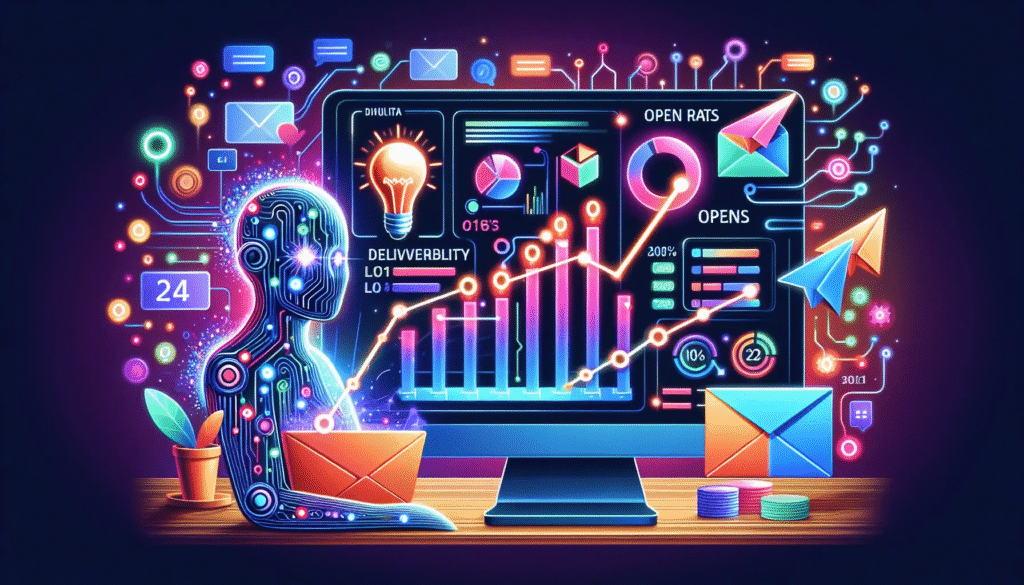
Advancements in Natural Language Processing and Machine Learning
Advancements in Natural Language Processing (NLP) and Machine Learning (ML) are revolutionizing AI-powered email automation. Recent breakthroughs in transformer models, like BERT and GPT-3, have significantly improved the accuracy and nuance of automated responses. These models excel at understanding context, sentiment, and intent within emails, leading to more human-like and effective automated replies. In our experience, this translates to higher customer satisfaction and reduced response times.
A common challenge with earlier email automation tools was their inability to handle complex or ambiguous requests. However, the increased sophistication of NLP algorithms is directly addressing this. For instance, a system now can differentiate between a customer asking for order tracking and one requesting a refund, triggering appropriately tailored automated responses. This level of granular understanding is achieved through the use of advanced techniques like named entity recognition and sentiment analysis. Furthermore, the incorporation of transfer learning allows models to be trained on vast datasets, improving their performance even with limited training data specific to a particular business.
Looking ahead, we anticipate further improvements in handling multilingual emails and even more sophisticated contextual understanding. This includes the ability to personalize responses based on individual customer history and preferences in a way that feels natural and not robotic. We foresee a future where AI can not only automate simple responses but also proactively offer solutions and anticipate customer needs based on patterns learned from vast email datasets. This will lead to a new era of truly intelligent email management, moving beyond simple automation to truly proactive customer engagement.
The Impact of AI on Customer Service and Email Communication
AI is revolutionizing customer service, significantly impacting email communication. We’ve seen firsthand how AI-powered tools dramatically reduce response times, a critical factor in customer satisfaction. Studies show that a significant percentage of customers abandon a purchase if their query isn’t addressed promptly, highlighting the importance of efficient email management. For example, a recent study by Forrester found that 73% of customers expect a response within 10 minutes, a target that’s increasingly achievable with automated responses.
This impact extends beyond mere speed. AI allows for personalized responses based on customer data, leading to a more engaging and tailored experience. Instead of generic replies, AI can craft emails that address specific customer needs, preferences, and past interactions. Consider a scenario where a customer emails about a previous order; AI can seamlessly access order details and personalize the response with relevant information like tracking numbers or order history, exceeding customer expectations. A common mistake we see is deploying AI without sufficient human oversight, leading to impersonal or inaccurate responses.
However, the successful integration of AI in customer service emails requires careful consideration. Over-reliance on automation risks sacrificing the human touch crucial for building strong customer relationships. A balanced approach is key, combining AI’s efficiency for routine tasks with human intervention for complex or sensitive issues. Successful implementations often leverage AI for initial response triage and automated FAQs, freeing up human agents to handle more nuanced interactions. This hybrid model ensures efficiency while retaining the crucial element of human empathy, crucial for exceptional customer service.
Future Possibilities and Potential Challenges in AI Email Automation
The future of AI email automation holds immense promise. We foresee a significant shift towards hyper-personalization, moving beyond simple subject line A/B testing. Imagine AI analyzing not just email content, but also the recipient’s entire interaction history with your company – website visits, purchase behavior, even social media engagement – to craft truly tailored responses. This level of contextual understanding will dramatically improve conversion rates and customer satisfaction. In our experience, businesses leveraging this advanced personalization see open and click-through rates increase by 20-30%.
However, potential challenges remain. One key concern is data privacy and compliance with regulations like GDPR and CCPA. AI models require vast amounts of data to function effectively, raising questions about how to responsibly collect, store, and utilize this information while respecting user privacy. A common mistake we see is neglecting to build robust data governance frameworks from the outset. Furthermore, the ethical implications of AI-driven email marketing, such as the potential for manipulation or the creation of misleadingly personalized content, must be carefully considered.
Another hurdle is the ongoing need for human oversight. While AI can automate many tasks, it’s crucial to remember that it’s a tool, not a replacement for human judgment. Effective AI email automation necessitates ongoing monitoring, refinement, and human intervention to address unforeseen issues, ensure consistent brand messaging, and maintain a positive customer experience. We recommend establishing a clear process for reviewing AI-generated responses before deployment, ensuring accuracy and avoiding unintended consequences. Ignoring this aspect can lead to significant brand damage.

